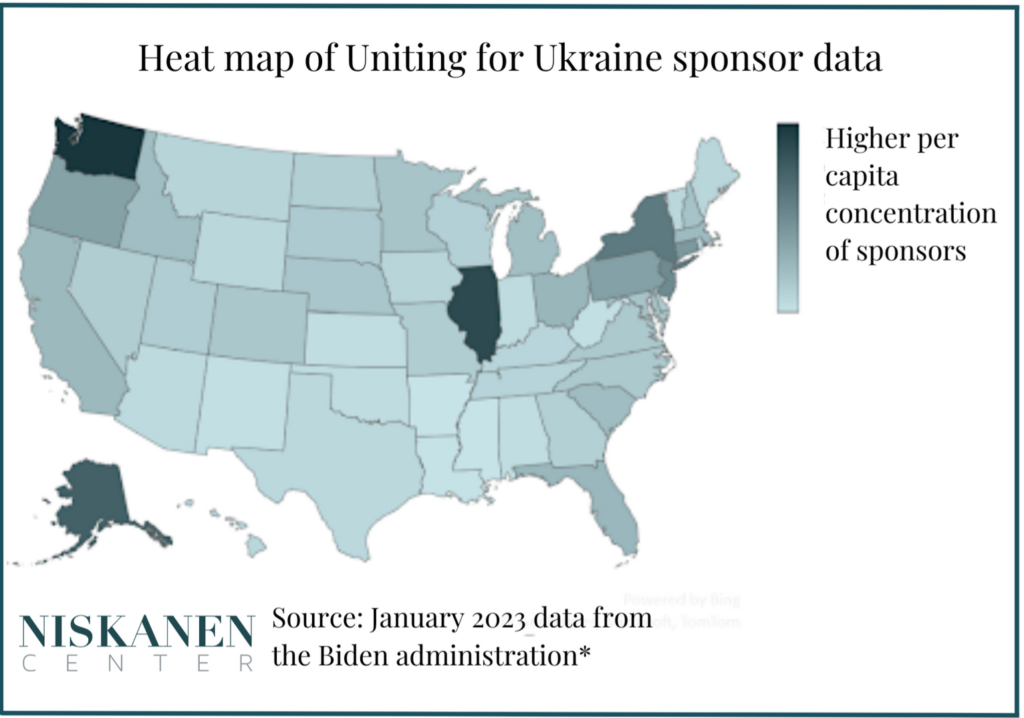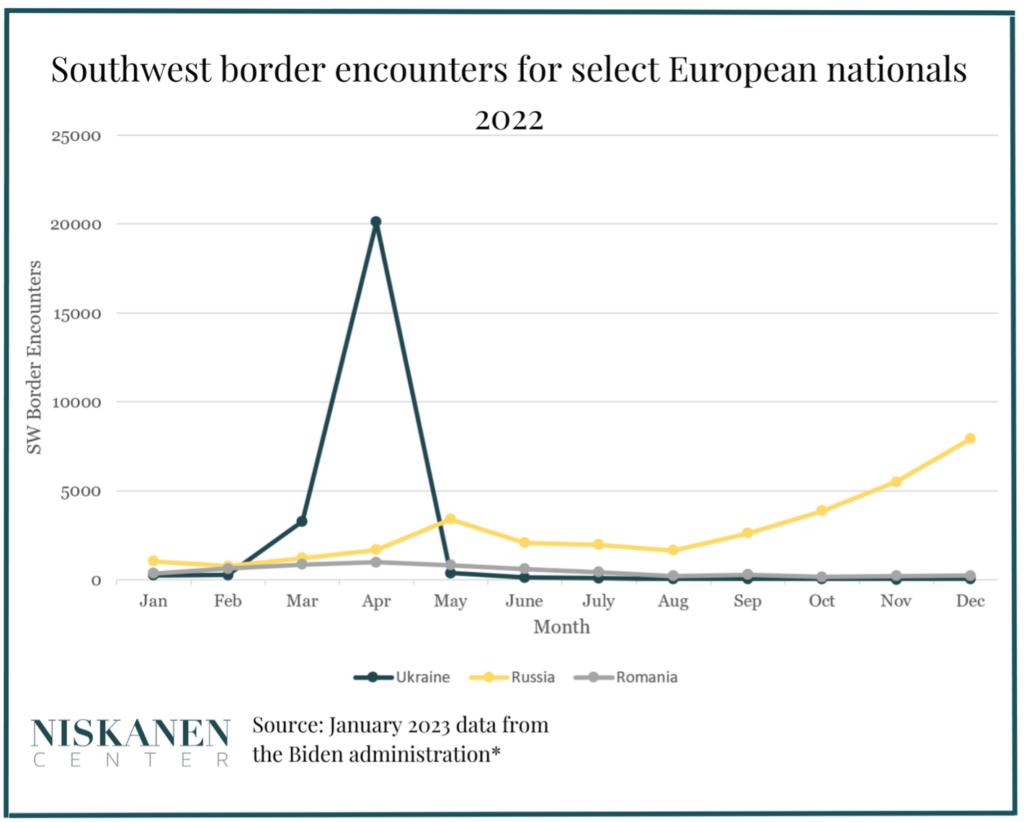Nearly a year after Russia invaded Ukraine in 2022, American policymakers remain engaged in a vital debate over the best ways to aid Ukraine in its struggle for survival. Amid these conversations, it is especially important to reflect on what has been the administration’s most popular and effective humanitarian response to the war: The Uniting for Ukraine (U4U) parole program.
This program works by allowing private citizens to volunteer as supporters for Ukrainian nationals who have been displaced by the war. Supporters agree to provide financial and social assistance to their beneficiaries upon their arrival. Ukrainians paroled through this process are allowed to stay in the United States for up to two years and are also authorized to seek work during their time here.
Since its establishment in late April of 2022, Uniting for Ukraine has maintained widespread interest, garnered support from Americans of all walks of life, and effectively decimated unauthorized Ukrainian arrivals at our southern border.
Support for U4U has been high.
The latest figures from the Biden administration* show that 207,103 supporters have filed to serve as a U4U sponsor. This number is especially impressive given that the program was launched less than a year ago. When averaged across the lifespan of the program, this amounts to a rate of approximately 316 supporter filings per day.
As a result of this keen level of interest in volunteering for the program, the administration has been able to admit over 100,000 U4U arrivals to date. This number is important because the administration’s original goal for the program was to reach 100,00 admissions. Given that going beyond this number will be contingent on the level of interest from the public, it is a promising sign that net supporter filings continue to outpace arrivals by a significant margin.
Support for U4U is widespread.
As Niskanen has previously covered, zip code data collected from U4U sponsor filings has shown that the program has a well-distributed geographic base of support. More than 35 metro areas have 1,000 sponsors and 55 have over 500. The average state contains 3,931 people who have filed as supporters.
When adjusted for population, the political and geographic distribution across states becomes even more noteworthy. The 10 states with the most sponsors per capita include Democratic strongholds in the Pacific northwest (Washington and Oregon), solidly red states on either end of the country (Alaska and Florida), and battleground states in the Mid-Atlantic and Midwest (Pennsylvania and Ohio). In an era defined by political and geographic divisions, U4U has offered proof that American compassion for those fleeing war is not monopolized by any party, region, or state.

U4U has dramatically decreased Ukrainian Southern border encounters.
U.S. Customs and Border Protection refers to the combination of apprehensions and expulsions of non-citizens under various statutes as encounters. Prior to the onset of the war, encounters with Ukrainian nationals at the Southwest border were lower than those with Russians and Romanians, the other two Eastern European nationalities data is available for. Ukrainian encounter numbers climbed dramatically after the invasion, reaching a high of 20,118 in April of 2022. Following the implementation of U4U, encounters in May dropped to 375 – a staggering 98% drop in the span of a month. From May to December 2022, Ukrainian encounters averaged 92 per month, a figure drastically lower than that for Russians (3,624) and Romanians (368) during the same time period.
Some of this decrease is undoubtedly attributable to Mexico revoking visa-free travel for Ukrainians around the same time-period. It should be noted, however, that Romanians and Russians also require a visa to travel to Mexico, and Southwest border encounters also dropped dramatically for Venezuelans when a similar program was introduced for them. Given this context, it is reasonable to conclude that U4U was largely responsible for the drop in encounters.

Conclusion
While focusing on current developments and preparing for future aid is important, policymakers and the public should also reflect on the successes of U.S. humanitarian policy towards Ukraine to date to help inform their future decisions. Uniting for Ukraine has achieved three core goals of the administration – assisting Ukrainians fleeing war, significantly stemming the flow of Southwest border encounters, and bringing Americans from different backgrounds together around a common cause. With Uniting for Ukraine’s original goal now met, these accomplishments should be kept in mind when reviewing this policy and constructing others.
*Data from Weekly Ukraine Report, Department of Homeland Security